#umayyad architecture
Text
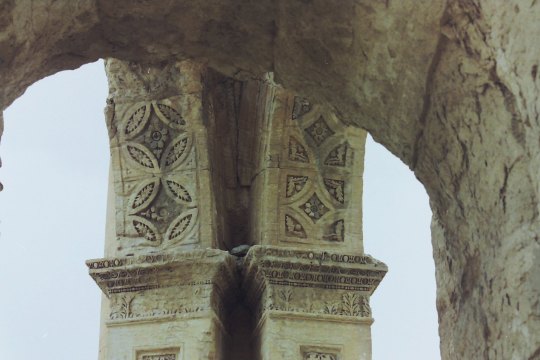

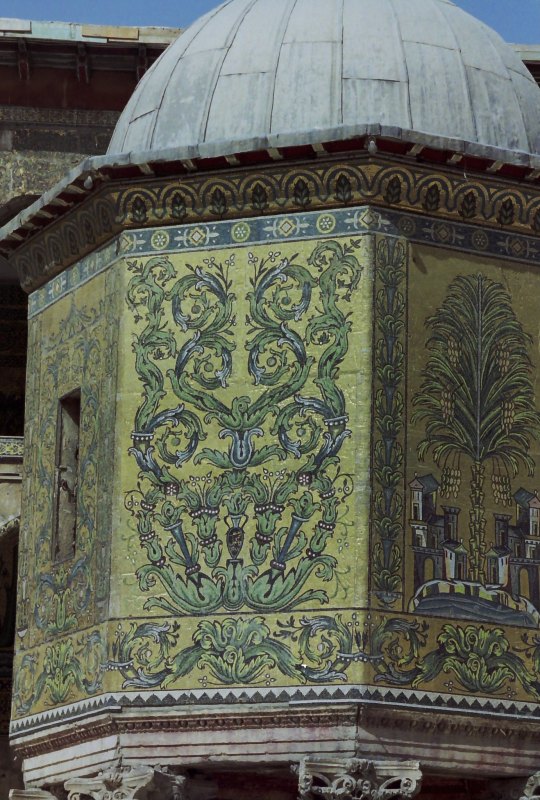
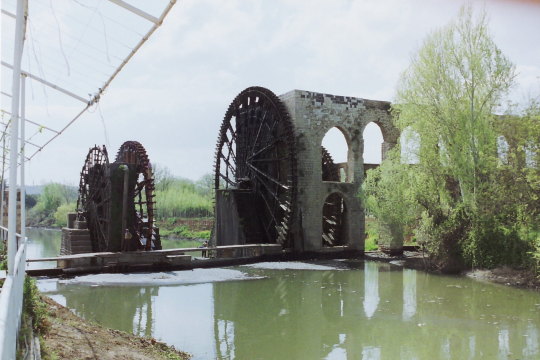

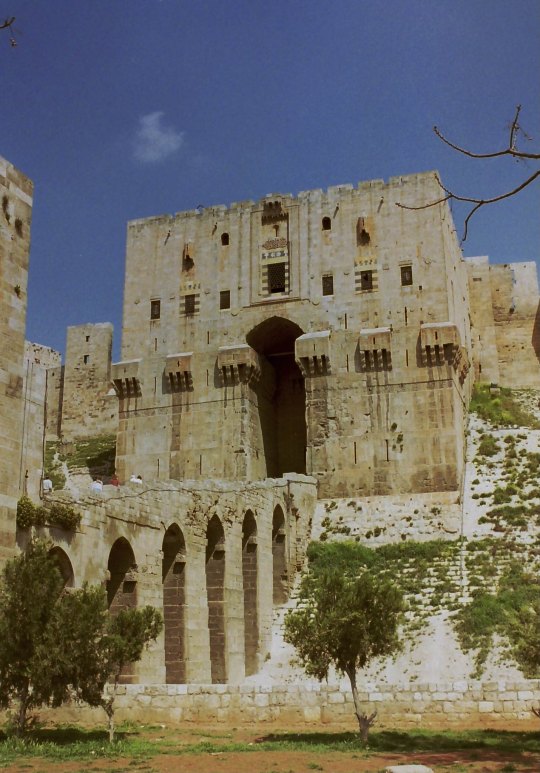
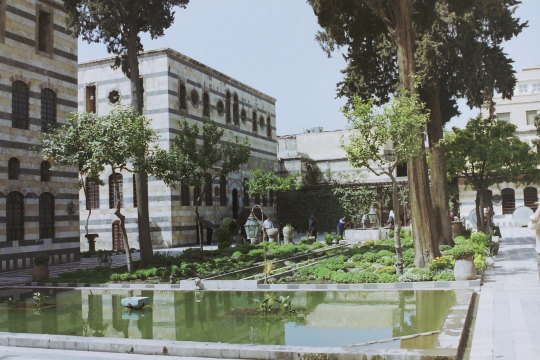
Syria, 1993. (2) (3) (4) (5) (6) (7) by jpotto
Via Flickr:
(1) Palmyra.
(2) Secluded square off Straight street, Damascus.
(3) Ommayed mosque, Damascus.
(4) Hama, waterwheels.
(5) View from the Citadel.
(6) Citadel, Aleppo.
(7) Al Azem palace garden, Damascus.
#ruins#stone carvings#chairs waiting#umayyad architecture#historic buildings#garden#1990s#syria#damascus#aleppo#mosque
33 notes
·
View notes
Text
Arabization in Spain primarily refers to the historical period known as **Al-Andalus**, which spans from the Muslim invasion in 711 until the fall of the last Muslim kingdom in Granada in 1492. During these centuries, much of the Iberian Peninsula was under Muslim rule, leading to a profound process of Arabization in various spheres of life.
### Aspects of Arabization in Spain:
1. **Linguistic**: Although Arabic did not completely displace the Romance languages, it became the language of administration, science, literature, and religion in the areas under Muslim control. Many Arabic words were adopted into Spanish and other peninsular languages, especially in fields such as agriculture, architecture, and science. Examples of words of Arabic origin in Spanish include "aceituna" (olive), "azúcar" (sugar), and "alfombra" (carpet).

2. **Cultural and Scientific**: Al-Andalus was a major cultural and scientific center in Europe during the Middle Ages. Arabization involved the adoption of many customs, architectural styles, and scientific and philosophical knowledge from the Islamic world. Cities like Cordoba, Seville, and Granada became centers of cultural exchange where Muslims, Christians, and Jews coexisted, leading to an intellectual and artistic flourishing.
3. **Religious**: Although conversion to Islam was not mandatory, many inhabitants of the Iberian Peninsula converted to Islam, either by conviction or due to the social and economic advantages it entailed. These converts were known as "muladíes." However, Christian (Mozarabic) and Jewish communities continued to coexist under Muslim rule.
4. **Political**: Arabization was also reflected in the political and administrative organization. Muslim rulers introduced an administrative system based on the Umayyad Caliphate model, with Cordoba as the capital of Al-Andalus. The Muslim administration left a lasting mark on the social and economic structure of the peninsula.

### Decline and Reconquista:
With the advance of the Christian **Reconquista**, a gradual process of reclaiming territories by the Christian kingdoms of the north, Arabization began to recede. The fall of Granada in 1492 marked the end of the Muslim presence in Spain, although the Arab influence remained in culture, language, and architecture. After the Reconquista, the Catholic Monarchs and their successors promoted Christianization and, in many cases, the expulsion or forced conversion of Muslims (Moriscos), resulting in a decrease in Arabization in the peninsula.
### Legacy:
The legacy of Arabization in Spain is profound and enduring. It is evident in the Spanish language, art, and architecture (such as the Alhambra in Granada), and in the culture in general. Although the Reconquista sought to reverse many of these changes, the Arab heritage remains an integral part of Spain's history and cultural identity.
23 notes
·
View notes
Photo
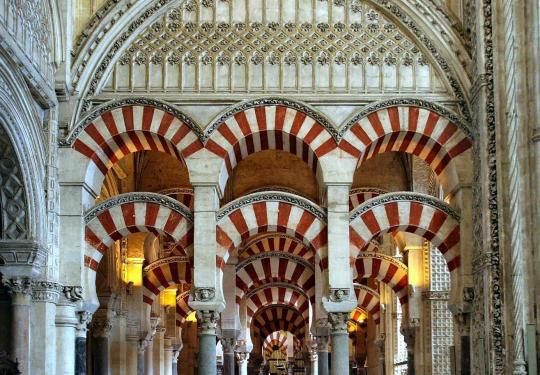
MWW Artwork of the Day (6/24/23)
Umayyad Spain (Moorish, 8th-15th c.)
Interior view: Great Mosque-Cathedral (8th c. CE)
Córdoba, Spain
The building is most notable for its giant arches, with 856 columns of jasper, onyx, marble and granite. These were made from pieces of the Roman temple which had occupied the site previously, as well as other destroyed Roman buildings. The double arches, pictured above, were a new introduction to architecture, and helped support the tremendous weight of the higher ceilings. The double arches consist of a lower horseshoe arch and an upper semi-circular arch. The famous alternating black and white voussoirs of the arches were inspired by those in the Dome of the Rock. They resemble those of Aachen Cathedral, which were built almost at the same time.
106 notes
·
View notes
Text
Nomadic Travel Series
Spot one, Yerevan, Armenia
Fiction
Yerevan, the heart of Armenia, beckons you with its ancient spirit wrapped in modernity. You, a wanderer, drawn to the pulse of a city that’s both familiar and strange. You walk its streets, your eyes absorbing the layers of time, from the echoes of ancient kingdoms to Soviet-era architecture that seems frozen in time. You feel the weight of centuries pressing against your soul, calling for transformation. But this is only the beginning of your nomadic journey. Georgia awaits next, but for now, Yerevan speaks to you.

In a quiet corner of Yerevan’s Republic Square, you meet him: a local Armenian, Arabized in subtle, striking ways. He stands tall, his beard meticulously groomed, wearing traditional Armenian attire, but with a twist. The familiar lines of a chokha coat mixed with an Arabesque design, his presence commanding yet serene. He gazes at you with a blend of Armenian pride and Arab mystery, chin raised slightly, arrogance embedded in his stance. You can’t help but feel the allure of his transformation. His authority is palpable, but it’s his blend of identities that fascinates you the most. You see in him what you hope to become—more than a man of one culture, but a bridge between worlds.
As you talk, the conversation drifts to history. Arab Muslims have walked these lands before. You know the deep connections between Armenia and the Arab world date back to the 7th century, during the Arab conquests when Armenia became part of the Umayyad Caliphate. Yet, despite centuries of external rule, Armenia preserved its identity, much like how you, Omar, will preserve yours. The Arab influence lingers, not as dominance, but as a layer of cultural memory. Islam never dominated here, but traces of Arab culture remain embedded, woven into Armenia’s vast historical tapestry, something you can appreciate.
As you explore, Yerevan’s residential architecture reveals itself. You see the common Soviet-era apartment blocks, concrete structures that stand like stoic relics of another era. Yet, nestled between them are quaint houses made from tuff stone, their reddish hue gleaming under the Yerevan sun, revealing the city’s ancient volcanic legacy.
In your mind, you begin to reshape these homes. The blocks are cold, rigid, functional—but what if they were softened by Arabic influence? Imagine: the concrete facades adorned with Arab arches, subtle geometric patterns carved into the balconies, and the windows replaced with mashrabiya screens, letting the wind flow through while casting intricate shadows on the ground. You envision a hybrid—a home that breathes both Armenian history and Arab art, a perfect balance between strength and elegance.


But Yerevan is also a city that’s evolving. The luxury apartments and villas in new districts sparkle with modernity. You propose something bolder. You see grand homes with sweeping Arab-style arches framing the entrances, while sleek glass walls reflect the city skyline. Inside, the fusion continues—luxurious modern interiors accented with traditional Arabic calligraphy, hanging lanterns casting warm golden light across marble floors. Here, luxury doesn’t just speak—it sings of two worlds intertwined.


Walking the streets, you notice the men. Most are dressed in modern, Western-style clothing—jeans, jackets, casual shirts. Practical, efficient, but it lacks the gravitas that you crave. It feels disconnected from the land beneath their feet, the history in their blood.
You imagine them differently. The casual clothing shifts in your vision. The shirts become long-sleeved tunics, with Arab-inspired embroidery on the collars and cuffs. Simple jeans, but softened by the flowing fabrics of the Middle East. A light scarf draped around their necks, a subtle nod to Arab fashion but grounded in Armenian practicality. It’s a fusion, but one that respects the heritage of both.




Armenia, a land steeped in Orthodox Christianity, yet remarkably secular in everyday life, teaches you more than history. You learn that the people, despite centuries of conquest and foreign influence, have held onto their identity fiercely. From the warmth of their hospitality to the solemnity of their churches, you realize that strength lies in resilience. The local customs, from the slow, deliberate drinking of coffee to the sacred ritual of greeting, reflect a philosophy of balance and patience. The mythological stories of Hayk and Aram, the legendary patriarchs of Armenia, tell of a people unyielding in the face of adversity, and you feel a kinship to them. Like Armenia, you too will forge your path, unyielding, yet adaptable.
Sitting in a small cafe, the sun dipping low over Yerevan, you reflect. Armenia isn’t a place for grand transformations but subtle ones. The fusion you seek isn’t about dominance but co-existence. Here, in this land that remembers so much, you find yourself pondering what it means to belong to two worlds. Arabization doesn’t erase; it enhances, enriches, and molds. You think of the man you met earlier—his quiet strength, his arrogance. You will be like him, but more. You will transform, not just as a nomad but as a creator of worlds.

Night falls, and you retreat to your modest stay. The house is simple, stone walls, a small wooden door, and a single window that overlooks the city. It’s nothing luxurious, but it’s enough. In the corner, you have created a small space for prayer, your salah corner. A prayer rug, minimal, but the geometric patterns remind you of home. Here, surrounded by simplicity, you feel connected—grounded, yet ready to embark on your next journey.

As you prepare to leave for Tbilisi, Georgia, you take with you the lessons of Yerevan. This is a place where identities mix but don’t fade, where history stands tall yet welcomes new ideas. You carry with you the knowledge that Arabization doesn’t mean change—it means integration, understanding, and respect. With each border you cross, you will take the best of what the world offers and make it yours.
#transformation#arabophile#arabization#arabophilia#arabic#CulturalFusion#ArabizedFashion#ArabInspiration#CrossCulturalFashion#NomadicInfluence
7 notes
·
View notes
Text
Discovering the world
Lebanon 🇱🇧
Basic facts
Official name: الجمهورية اللبنانية (al-Jumhūrīyah al-Lubnānīyah) (Republic of Lebanon)
Capital city: Beirut
Population: 5.3 million (2023)
Demonym: Lebanese
Type of government: unitary parliamentary republic
Head of state: vacant (President)
Head of government: Najib Mikati (Prime Minister)
Gross domestic product (purchasing power parity): $78.23 billion (2022)
Gini coefficient of wealth inequality: 31.8% (medium) (2011)
Human Development Index: 0.723 (high) (2022)
Currency: pound (LBP)
Fun fact: It hosts the highest number of refugees per capita and per square kilometer.
Etymology
The country’s name comes from Mount Lebanon, whose name derives from the Phoenician root lbn, meaning “white”.
Geography
Lebanon is located in West Asia and borders Syria to the north and east, Israel to the south, and the Mediterranean Sea to the west.

There are two main climates: Mediterranean-influenced humid continental in the center and east and hot-summer Mediterranean in the rest. Temperatures range from 11 °C (51.8 °F) in winter to 30 °C (86 °F) in summer. The average annual temperature is 20.9 °C (69.6 °F).

The country is divided into nine governorates (muḥāfaẓāt), which are further divided into twenty-five districts (aqdyah). The largest cities in Lebanon are Beirut, Tripoli, Jounieh, Zahlé, and Sidon.
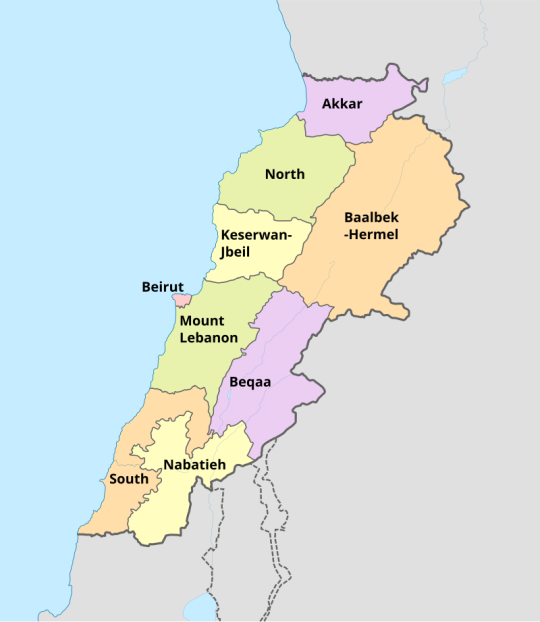
History
2500-64 BCE: Phoenicia
1650-1180 BCE: Hittite Empire
1550-1069 BCE: New Kingdom of Egypt
550-332 BCE: Achaemenid Empire
332-64 BCE: Seleucid Empire
64 BCE-394 CE: Roman Empire
394-635: Byzantine Empire
619-629 CE: Sasanian Empire
636-661: Rashidun Caliphate
661-750: Umayyad Caliphate
750-1517: Abbasid Caliphate
1099-1291: Kingdom of Jerusalem
1102-1289: County of Tripoli
1250-1516: Mamluk Sultanate
1516-1842: Emirate of Mount Lebanon
1516-1918: Ottoman Empire
1843-1861: Double Qaim-Maqamate of Mount Lebanon
1860: civil conflict in Mount Lebanon and Damascus
1915-1918: Great Famine of Mount Lebanon
1920-1926: State of Greater Lebanon
1923-1946: Mandate for Syria and the Lebanon
1926-1943: Lebanese Republic
1943-present: Republic of Lebanon
1948: Arab-Israeli War
1975-1990: Lebanese Civil War
1976-2005: Syrian occupation
1985-2000: South Lebanon conflict
2005: Cedar Revolution
2006: Lebanon War
2006-2008: protests
2007: Lebanon conflict
2011: Intifada of Dignity
2019: 17 October Revolution
2020: Beirut explosion
2021: Beirut clashes
Economy
Lebanon mainly imports from the European Union, Türkiye, and China and exports to the European Union, the United Arab Emirates, and Switzerland. Its top exports are diamonds, polyacetals, and gold.
It has natural gas, limestone, oil, and salt reserves. Services represent 83% of the GDP, followed by industry (13.1%) and agriculture (3.9%).
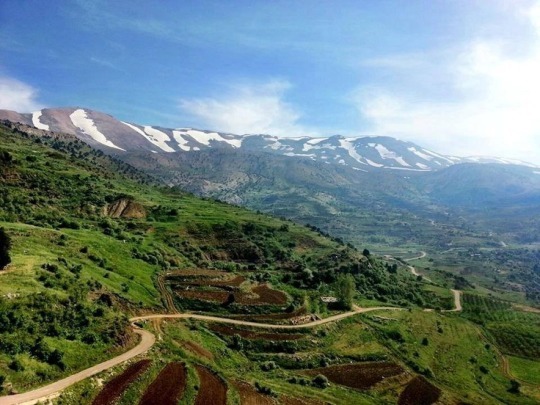
Lebanon is a member of the Arab League, la Francophonie, and the Organization of Islamic Cooperation.
Demographics
95% of the population is Arab, while Armenians make up 4%. The main religion is Islam, practiced by 55% of the population, 27.6% of which is Sunni.
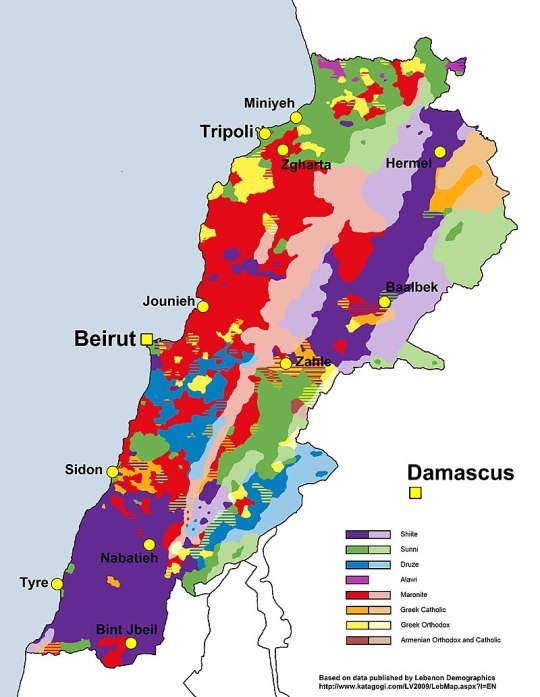
It has a negative net migration rate and a fertility rate of 1.7 children per woman. 89% of the population lives in urban areas. Life expectancy is 78.3 years and the median age is 31.3 years. The literacy rate is 96.7%.
Languages
The official language of the country is Arabic. French is spoken by 40% of the population.

Culture
Lebanese culture has Persian, Greek, Roman, Arab, Ottoman, and French influences. Lebanese people are very gregarious.
Men traditionally wear a shirt, a dark vest, baggy pants (sherwal), a belt, and a headdress. Women wear a shiny dress (gambaz), a wide belt, and a conical hat with a long piece of silk (tantur).
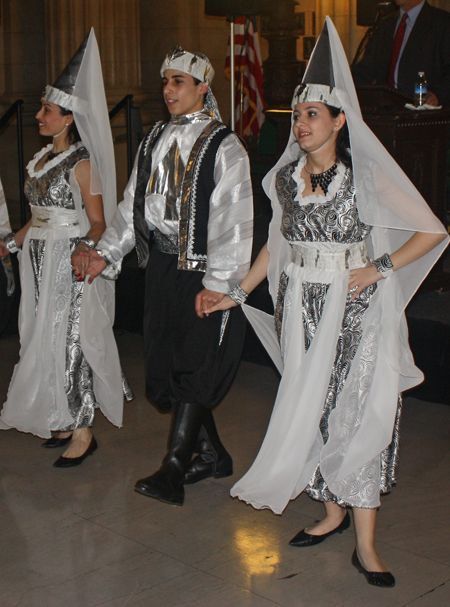
Architecture
Traditional houses in Lebanon are made of stone and wood and have flat roofs and terraces.
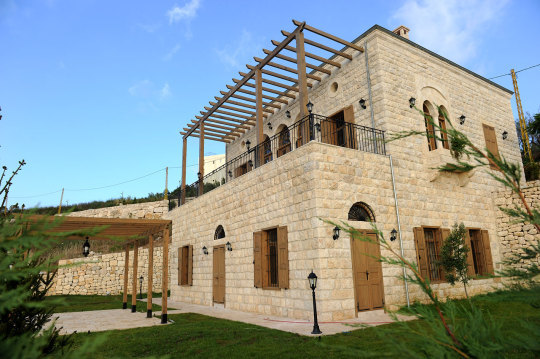
Cuisine
The Lebanese diet is based on fish, meat, pulses, and vegetables. Typical dishes include bamieh bi-zeit (okra and tomato stew), kibbeh (fried balls made of spiced meat and bulgur), sayadieh (seasoned fish and rice), sfouf (an almond-semolina cake), and tabbouleh (a salad of bulgur, onion, tomatoes, and parsley).
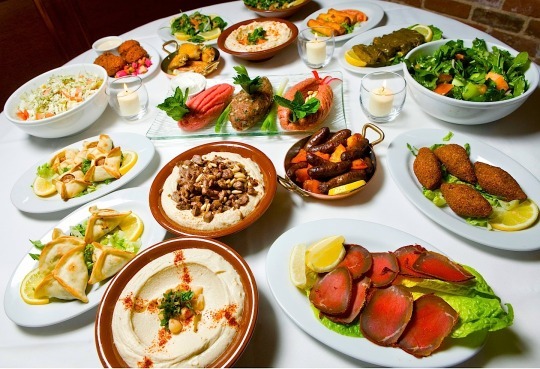
Holidays and festivals
Like other Christian and Muslim countries, Lebanon celebrates Epiphany, Armenian Christmas, St. Maroun Day, Feast of the Annunciation Day, Good Friday, Easter Sunday, Assumption, Christmas Day, Islamic New Year, Ashura, Mawlid, Eid al-Fitr, and Eid al-Adha. It also commemorates New Year’s Day and Labor Day.
Specific Lebanese holidays include Rafic Hariri Memorial Day on February 14, Liberation and Resistance Day on May 25, and Lebanese Independence Day on November 22.
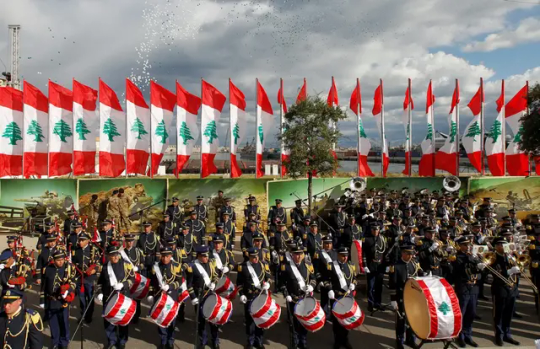
Independence Day
Other celebrations include the Aerial and Circus Arts Festival, the Baalbeck International Festival, which features dance and music performances, and the Beiteddine Art Festival.

Baalbeck International Festival
Landmarks
There are six UNESCO World Heritage Sites: Anjar, Baalbek, Byblos, Ouadi Qadish (the Holy Valley) and the Forest of the Cedars of God (Horsh Arz el-Rab), Rachid Karami International Fair-Tripoli, and Tyre.
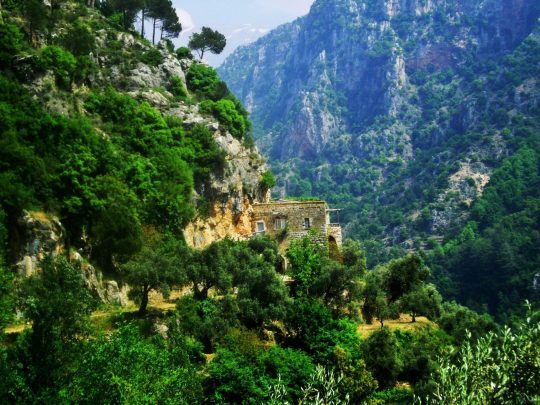
Ouadi Qadish and the Forest of the Cedars of God
Other landmarks include Jabal Moussa, the Mohammad Al-Amin Mosque, the Moussa Castle, Our Lady of Lebanon, and the Tripoli Citadel.
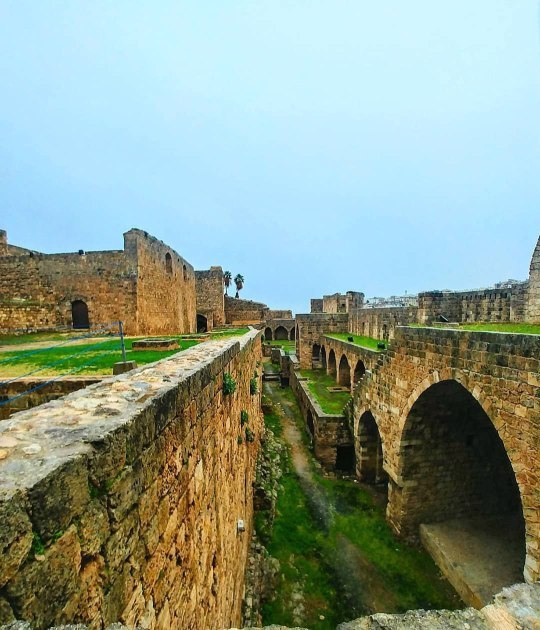
Tripoli Citadel
Famous people
Amin Maalouf - writer
Elie Saab - fashion designer
Fares Fares - actor
Jackie Chamoun - skier
Khalil Beschir - racing driver
May Ziade - poet and writer
Nadine Labaki - actress
Najwa Karam - singer
Ragheb Alama - singer
Rima Fakih - model

Rima Fakih
You can find out more about life in Lebanon in this post and this video.
6 notes
·
View notes
Photo

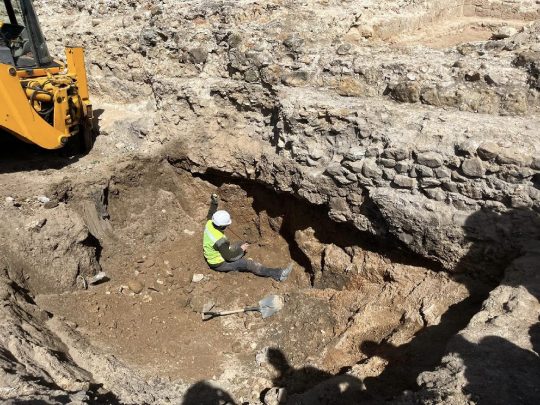
A Complete Suit of Armor Found at Spanish Castle
ARCHAEOLOGISTS FROM ARBOTANTE PATRIMONIO E INNOVACIÓN SL HAVE UNCOVERED A COMPLETE SUITE OF ARMOUR DURING EXCAVATIONS AT THE CASTILLO DE MATILLA DE LOS CAÑOS DEL RÍO NEAR SALAMANCA, SPAIN.
The castle was previously thought to have been constructed following the Arab conquest of the Iberian Peninsula, which became part of Umayyad Caliphate around AD 711–732. However, very little is known about the history of the castle, with sources indicating that it was destroyed on the orders of Ferdinand II of Aragon in AD 1505.
The castle ruins are located north of the village of Matilla de los Caños del Río on a small hill at a strategic position overlooking the flat plains below.
Archaeologists from the Arbotante patrimonio e innovación SL have been conducting ongoing excavations since early 2023, revealing the layout of the castle interior and exterior walls. The team have identified the possible gateway entrance, a cistern, circular towers, and an armoury containing the remains of weapons and pieces of armour.
According to the researchers, the archaeological evidence contradicts the historical narrative as they’ve found no evidence of Arab occupation or related architectural elements.
The team have also discovered a complete suit of armour which dates from the 16th century. The armour consists of almost 50 pieces and was found alongside a crossbow and a knife.
Speaking to Salamanca24horas, archaeologist Iván García Vázquez, said: “The armour has all its functional pieces, it consists of a helmet, breastplate, trellis, elbow pads, greaves and other protections for arms and legs.”
Excavations also revealed numerous crossbow bolts, some of which have a socketed head almost square in cross section that was mainly used against armour, in addition to spike points that was used to penetrate chain mail. Also found among the ammunition cache are pieces of bolaño, a type of stone cannonball also known as “stoneshot”.
#A Complete Suit of Armor Found at Spanish Castle#armor#ancient armor#ancient artifacts#archeology#archeolgst#history#history news#ancient history#ancient culture#ancient civilizations
18 notes
·
View notes
Text
What is Islamic Architecture?
Islamic Architecture is an architectural style that dominates Muslim-majority countries around the world such as Indonesia, Pakistan, Egypt, Saudi Arabia, Turkey and many more, but is not limited to these locations. Islamic architecture can be found across the globe - though the architecture in other locations may not hold all the main characteristics - there are definite elements that have been incorporated into the western, modern world, (The Spruce., 2022).
This architectural style is associated with the religion of Islam, and has evolved from various other architectural styles like that of Mesopotamian and Roman.
Islamic architecture has several characteristics that are recognisable to even the untrained eye; the use of colour, geometric shapes, symmetry, patterns and calligraphy define the architectural style (Invaluable., 2020). This style of architecture is typically associated with religious establishments in Islam such as the Mosque, but is not restricted to this, the style extends to palaces, tombs, forts and public buildings. One of the oldest elements to identifying Islamic architecture is the presence of Minarets and domes. Minarets are tower-like structures with small windows and enclosed spiral staircases made for muezzins (a man who calls Muslims to pray) to call to worshippers from a high point. The minarets often feature one or more balconies. The forms of the minarets commonly seen range from thick, squat, spiral ramps to soaring, delicate, pencil-thin spires, with the base usually being square in shape. The number of minarets located in a Mosque will vary from one to six and they stand as landmarks of Islam.
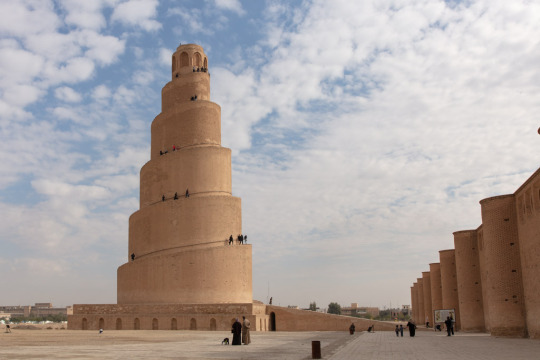
Grand Mosque of Samarra and the spiralling Malwiya Minaret (Adventures of Nicole., 2022).
Domes (like several other architectural movements such as Renaissance and Byzantine) are also a regular feature of islamic architecture.
The first Islamic design featuring a dome is a 7th century shrine in Jerusalem - Dome of the Rock, Arabic Qubbat al-Ṣakhrah. Dome of the Rock was built by Umayyad caliph (chief Muslim civil and religious ruler of the first Muslim dynasty) 'Abd al-Malik ibn Marwān. The structure is situated on a flat elevated plaza known to Muslims as 'The Noble Sanctuary' (al-Haram al-Sharīf), and the rock above which the dome is located is the spot the propet Muhammad was taken up into heaven for an encounter with God (Mi'rāj), (Britannica., 2014).
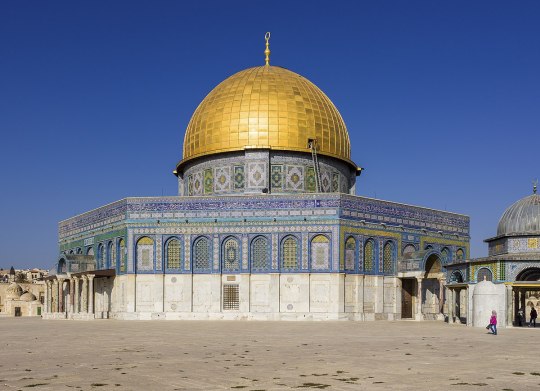
Dome of the Rock, Jerusalem, 691-692 CE.
Most domes rest on pendentives which are constructional devices used to place circular domes over square or rectangular shaped rooms. You can recognise pendentives as Islamic architecture by its decorative tiles or muqarnas - a form of ornamental vaulting, (IvyPanda.,2020).

Diagram of pendentives.

Muqarnas and decorative tiles example.
The most important piece of indo-Islamic architecture os the tomb of the Shah Rukn-i-Alam in Multan. This tomb was built between 1320 and 1324 CE by Giyath al-Din Tughluq in the pre-mughal, architectural style, Giyath was the governor of Diplapor (a city in the Okara District of the Punjab, Pakistan) and is thought to have been built to serve as a tomb for himself. However, it was presented to the family of the renowned Sufi saint Sheikh Rukn-ud-Din Abul Fateh (Sacred Sites., 2020). The tomb is an octagonal shape, 35m high and structured by red brick with a visible frame of beams and shisam wood, and further designed with the use of carved brick, wood blue and white faience mosaic tiles with raised relief patterns. The octagon is decorated with geometric, floral, and arabesque designs and calligraphic motifs. The interior was originally plastered but is now bare and the sarcophagus is surrounded by 72 of his descendants. The saint is still held in high esteem and the tomb is the focus of over 100,000 pilgrims from all over South Asia who visit in order to commemorate his memory, (Unesco., 2004).
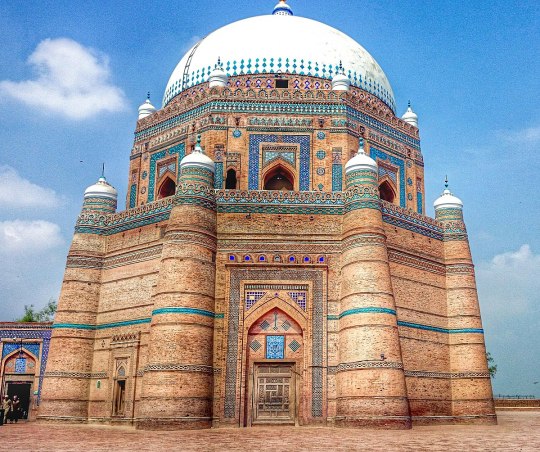
Shah Rukn-i-Alam, Multan, Pakistan.
Arches are yet another prominent feature of identifying Islamic architecture, and their placements usually define the entrances to buildings and rooms. There are several types of arches including: Pointed Arches, Ogee Arches, Horseshoe Arches, and Multifoil Arches. The double arched system of the Mosque-Cathedral of Córdoba, the pointed arches of the Al-Aqsa masque provide excellent examples of how arches become indispensable features of Islamic architecture (Rethinking the Future., 2023).

Double Arches of Mosque-Cathedral of Córdoba
The majority of mosques and palaces falling under the style of Islamic architecture feature courtyards and can house large gatherings of people during festive occasions and prayers. The courtyards will feature fountains for the people to perform ablution before prayers.
Now that there has been an introduction into what it takes to create for Islamic styled architecture, the rest of the blog is open to deeper dives of certain establishments, countries, and architects themselves,
Thank you for reading, I hope you enjoyed!
Summer Marshall-Miller
BIBLIOGRAPHY: Hohenadel, K. (2022) The Spruce. Available at: https://www.thespruce.com/what-is-islamic-architecture-5120474 (Accessed 20 January, 2023)
Britannica, The Editors of Encyclopaedia. (2014) Encyclopaedia Britannica. Available at: https://www.britannica.com/topic/mosque (Accessed: 20 January, 2023)
Unknown Author (2020) Invaluable. Available at: https://www.invaluable.com/blog/islamic-art-patterns/ (Accessed: 21 January, 2023)
IvyPanda (2020) 'Muqarnas in Islamic Architecture'. Available at: https://ivypanda.com/essays/muqarnas-in-islamic-architecture/ (Accessed: 24 January 2023)
UNESCO (2004) Tomb of Shah Rukn-e-Alam. Available at:https://whc.unesco.org/en/tentativelists/1884/#:~:text=The%20tomb%20of%20Shah%20Rukn,saint%20following%20the%20latter%27s%20death (Accessed 7th December 2022).
Unknown Author (2023) Rethinking the Future. Available at: https://www.re-thinkingthefuture.com/architectural-styles/a2589-10-distinctive-elements-of-islamic-architecture/ (Accessed: 23 January 2023).
Nicole Smoot (2022) The Adventures of Nicole. Available at: https://adventuresoflilnicki.com/samarra-iraq/ (Accessed: 23 January 2023).
#architecture#islamicarchitecture#art#history of art#islamic#mosque#history#my blogs#student#major project
33 notes
·
View notes
Note
Guess what?
hmmmmm umayyad-era architecture in iberia??
2 notes
·
View notes
Text
hello once again, your friendly neighborhood spaniard is here once again to comment on the references to spanish culture i'm seeing while playing scarlet and violet!
here's my previous post on this! and i wanted to tell you that as per this post, i've officially seen all the cities and towns in paldea which means there's not really much else to explore, these posts are coming to an end :(
anyways, let's start
if montenevera is based on the pyreenees, it makes sense that the area around the fairy squad camp is modeled around another part of northern spain, in this case asturias and more precisely the picos de europa national park, arguably the prettiest part of the country (i've never been there but everyone that has been says asturias is the prettiest so who am i to disagree). just like in the game, it's a beautiful prairie place next to big scary mountains and right by the sea! however, there are no marshy areas in asturias; the three largest ones in the country are the ebro delta [pic 6], the valència albufera [pic 7], and doñana national park [pic 8]. i would say the in-game one is probably referencing the ebro delta, only based on location, as the other two are more south.






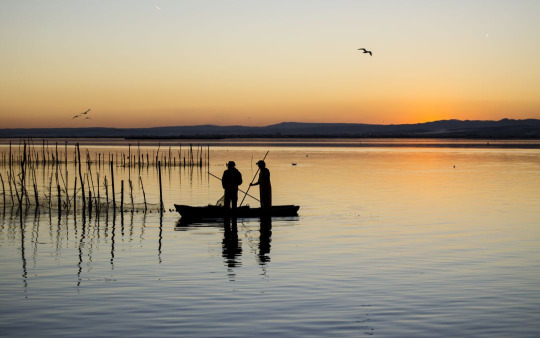

another fun thing about this area is that if you go swimming in the north coast you'll be able to find the tynamo evolution family, based on lampreys! lampreys have been fished in galicia as early as the roman times, with unique rock constructions built in the rivers called pesqueiras used to specifically catch them. they are part of the traditional galician (and portuguese!) cuisine, and they are similar to anchovies, one of the most popular dishes in another northern iberian area, cantabria.




finally, there's the last town of the game that i had yet to see, alfornada! one fun fact about me is that my favourite architectural style is mudéjar, so i was absolutely stoked to see a whole town built in that style!!! for everyone who doesn't know what mudéjar is, or why arabic-inspired music sounds all throughout the town, i'm gonna summarize 700 years of story really quick: after the western roman empire fell, the visigoths took over the peninsula, and things were chill for a bit until 711, when the moors invaded the peninsula. by 722 all but asturias was now part of the umayyad caliphate (we call moorish iberia al-andalus for short), but the asturians defeated the moors in the battle of covadonga and from there on the reconquista started, a centuries old war between christians and muslims in iberia that lasted until 1492, when the last remnants of al-andalus were defeated. as you could imagine this conjured up a very complex social landscape and a unique cultural makeup that still lasts till this day. within all of that, there were three groups we had to study in class and were a pain in the ass to differenciate (i had to search what each one were for this post): muladíes (local iberians that converted to islam and lived in al-ándalus), mozárabes (christians and jews that lived in al-ándalus), and mudéjares (muslims living in the iberian christian kingdoms). mozárabes and mudéjares had to pay extra taxes and live in special quarters of the cities, but apart from that they all lived peacefully which is neat. both groups had their own art styles, but the mudéjar art and architecture was the most prominent of the two, and even experienced a renaissance in the 19th and 20th centuries with the neo-mudéjar style. it basically mixes muslim and christian styles and it's so good i love it with all my heart.
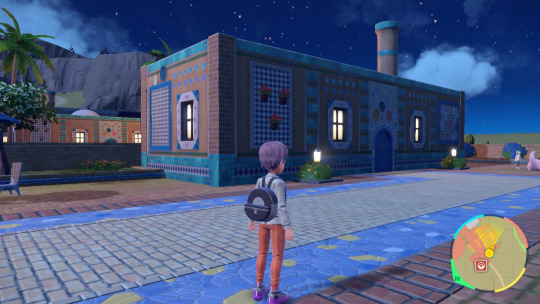
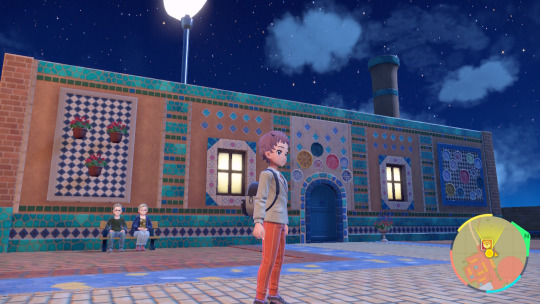


also, alfornada is known for its pottery, and ceramics are one of the traditional spanish arts, there are still a lot of ceramic workshops in rural areas where you can find handmade ceramic. and the plates displayed in alfornada are also very popular in the country, every grandma has at least one set very similar to the ones in the game lol. one particular place associated with this type of ceramic is talavera de la reina, in toledo. as our ex-president once said 'the talavera pottery is a big thing, in other words, it is not' a small thing' (it doesn't make sense in spanish either <3)

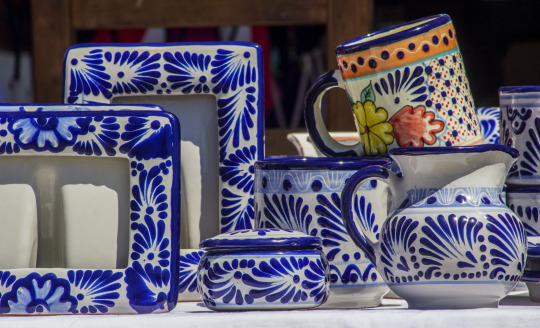


you thought i was done with this town huh? surely there isn't any more references right??? right??? well, we're just getting started. another interesting feature of alfornada is all the fountains in the streets, which, alongside with the music and the mudéjar style, made me realise what was the biggest inspiration behind this town: the alhambra, the palace complex of the kings of the nasrid kingdom of granada, the last stronghold of al-andalus and imo the most incredible human construction ever (it's a unesco world heritage site as well). even the setting of alfornada corroborates this; the alhambra sits on the top of a mountain, right by the sierra nevada mountain range, one of the tallest of the country (in fact, the highest peak in iberia, the mulhacén, is located there). one of the main defining features of the alhambra was the usage of water, with tons of canalization through the complex and lots of gorgeous fountains.


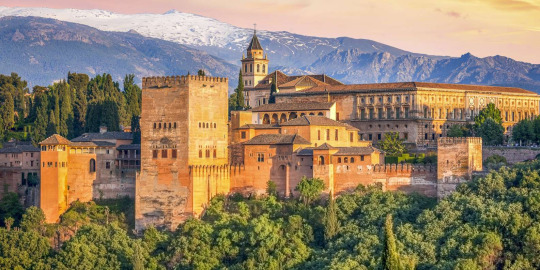


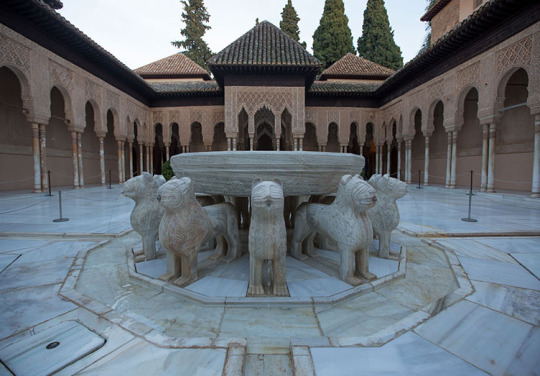
we're almost done, hold up (this is the first post where i had to cut some images cause i had reached the 30 pic limit oops). just north to alfornada, if you continue to climb up the mountain, you'll reach a ruins area. there are tons of these in paldea, and it makes sense, there's a ton of ruins everywhere in spain as well, but these are special due to its location, its context, and the arch and colums that can clearly be seen. i'm pretty sure this is a direct reference to medina azahara, the palace complex of the caliphate of córdoba, that now lies in ruins (another world heritage site). i visibly gasped when i got here, it shows how much thought the pokemon company put into this game :)
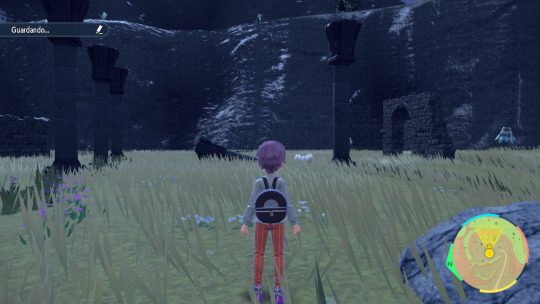

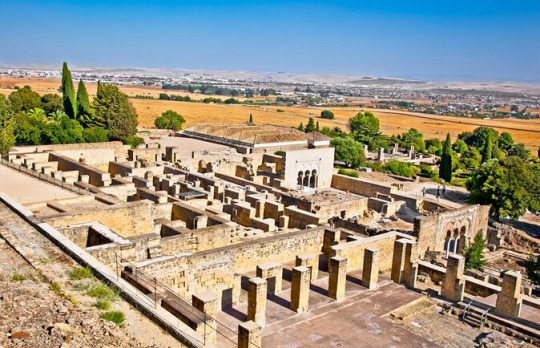

and that was all! i hope you liked it :)
here's next post !!!
#pokemon#pokemon scarlet and violet#pokemon sv#pokemon spoilers#pokemon sv spoilers#yeah i love alfornada :)#also like#the name#-ada as in granada#and in spanish the town is alforno town#al- is the arabic article that can be found in tons of spanish words#like alfar (pottery factory / workshop / atelier?)#and forno is just the old spanish way of writing horno (oven / furnace)#so yeah#probably the most detailed city in the region
39 notes
·
View notes
Note
You are incredibly racist, GRRM himself has said that the closest equivalent of Dorne to the real world is the Moorish influences of Spain, and mentions PALESTINE and Wales as being two other influences. Literally his own words. Even in Game of Thrones, they filmed the Water Garden scenes in the Alcazar of Seville, a beautiful Moorish castle in Spain. That castle was literally built by Muslims and incorporates verses from the Quran and countless traditional Arabic and Islamic architectural elements. Fun fact: Alcázar comes from the Arabic word (al-qasr), meaning fort/castle/palace.
Dorne’s conquest by Nymeria parallels Spain’s conquest by the Moors. Nymeria Martell most obviously can be paralleled with Tariq Ibn Ziyyad, the Muslim Amazigh general hailing from Morocco that led the Muslim conquest of Spain on behalf of the Umayyad Caliphate, by crossing the Mediterranean sea and landing in Gibraltar. According to legend, Tariq Ibn Ziyyad burned his fleet before the Battle of Guadalete to prevent any of his troops from retreating back home. Who else burned their fleets to show commitment to their new conquest ? Nymeria Martell.
GRRM credits the “hot, dry” climate to being similar to that of Spain or Palestine’s, and that the mountains where the stony Dornishmen dwell being the equivalent to Wales. The Sandy Dornishmen are described to dwell in the deserts and along rivers, which is a descriptor that describes so many parts of West Asia (incorrectly called the “Middle East”) and North Africa. GRRM mentions Palestine, which has many streams and a very important river, the River of Jordan, as well as the Naqab region, a desert region of Palestine, therefore drawing parallels from the Sandy Dornishmen to the Palestinians is correct since Palestine is sandy, dusty, and dry. Finally, there’s a Stony Dornishmen, which GRRM equates to Wales.
*EDITED POST* (4/14/24)
I assume that this is the post you are responding to.
We must remember that the rules determining what racial group you are a part of is solely determined by the legal definitions of the created designations of "white", "mestizo", "Black", or whatever said society has created in their past and present. which is why when you travel, you sorta change race or have it "tweaked" to mean something else. In Westeros, there is not such legal, social, etc. concept of race that matches the modern U.S.A or any European definition. If you said Corlys was "Black", it would mean nothing to a Stark.
Race is also different from ethnicity or nationality: you can be Paelstinian Arab but or a Black American but be white passing enough to "become" white. You can be of East Asian descent and have monolids to be racialized as "Asian", but were born and partially raised in Germany (nationality) with the ethnicity of Uyghur.
Definitions of racism:
(Google)
prejudice, discrimination, or antagonism by an individual, community, or institution against a person or people on the basis of their membership in a particular racial or ethnic group, typically one that is a minority or marginalized
the belief that different races possess distinct characteristics, abilities, or qualities, especially so as to distinguish them as inferior or superior to one another
(Merriam Webster)
a belief that race is a fundamental determinant of human traits and capacities and that racial differences produce an inherent superiority of a particular race
This is from GRRM about "race" in ASoIaF and the Dornish:

Did GRRM ever actually say the words, "stony Dornish men are a completely different ethnic group from sandy or salty" or that "stony vs salty vs sandy Dornish people--apart from the nonDornish peoples' ways of categorizing them--are peoples with very different and maybe opposing customs the reflect in certain "laws" in Dorne"?
For the Martells and Dornishpeople to be PoCs exactly like the PoCs today in real life, there kinda has to be a history of a) the Dornish having been assimilated into Westerosi society/infrastructures and made subordinate to the "white" Westerosi b) actual systematic oppression against the Dornish from the nonDornish, and Dorne has been able to maintain its independence from Westeros pretty much since Westeros' inception. Even after Daeron II married Myriah Martell, the Martells and the Dornish still worked as their own principality rather than a region totally under the control of the Westerosi monarchy. There was no colonization or successful imperialist campaigns on Dorne. Like the Targs, Dorne is "queer" not for skin color nor religion so much as the Rhoynish traditions towards gender equity--at least regarding succession and leadership--and sexuality
I argued for how the Westerosi see the Dornish, which is not like how medieval EUs saw non-Christian Africans or Arabic-speaking Muslims. It is how Anglo Saxon Normans would have seen Spanish/Eu Mediterraneans. Watsonianly. This is a question of who are the people categorizing "race", and how is "race" categorized by those people.
There is tension b/t Stormlanders/Reachmen and the Dornish people (mostly Stony Dornishmen of the north) but it's hardly equivalent to what is known as "race". Not yet. Daeron I's categorization is a beginning, A PRECURSOR. With how Daeron II's subjects rebelled with a strong anti-Dornish sentiment (not enough misogyny [succession rules] & and a persistent sense of having court & office positions "taken" from the "local" nobles) the Otherness indicates a xenophobia but here is no concept of "white" or "PoC" anywhere.
I have also already addressed the whole stony vs salty vs sandy thing HERE and HERE. In both of those posts, I acknowledge that there are Islamic and Arabic inspirations for the creation of Dorne and I still recognize them there. And the Rhoynish (mot the Martells or any Dornish people) are definitely PoC. It's pretty obvious. But Dornish people--including the Martells--while descended from the Rhoynish and Rhoynisheness definitely determine how nonDornish perceive and identify Dornish people, are not racialized as today's PoCs are. They are closer to how Jewish, Spaniards, Mediterranean Europeans, and Southern European Europeans are racialized by Northwestern Europeans.
Those monikers Daeron I gave distinguished them based on appearance alone, hence the beginning of skin-color-race in terms of how much Rhoynish culture and blood mixed with the previous Andal-only people's, more of the Rhoynish cultural influence the more you go south and less when you go north. If you called a Wyl (example of a Dornish house of the north) anything something other than Dornish and just called them a "stony" Dornishman, I think they'd take offense.
Once again, when we see how the concept of race developed from religion to skin color, in Spain, you see that religion was the first way for medieval people to differentiate themselves into "races"--and when they used the word "race", they meant just "people from that region/religion/history", not necessarily people with such looks--more than skin color (though color was sometimes mentioned alongside, to identify, so as to say that this African was "safer").
Then there is the fact that there were intermarriages between Arabic-speaking, Muslims, Africans to be called "Moors" (a word from Christian Europeans of the pale variety, not those peoples) and with Catholic Spaniards. Today, Spain is considered a white European country even with its numerous ethnicities and history of conquest by the Umayyad Caliphate. Dorne, in autonomy and a unit of territory, is like both Wales and Spain. Today, European regions that are considered, racially, white.
Doylistically, while the narrative gets its inspiration from real life PoCs architecture and figures, the fact that Dorne, wherever you go even with the different levels of Rhoynish influence, is an amalgamation of Andal and Rhoynish that still has that Andal Seven/Catholic religion, and the Common tongue (Rhoynish is not spoken by most people in Dorne except the Green blood bc the Red Princes outlawed it) set up universally despite equal primogeniture and tolerance of homosexuality/extramarital sex means that those things that precede race-by-face/skin and then set up the basis for race-of-skin/face (religion, language, customs) does exactly not resemble what happened for the same as real life (again, Spain is not a PoC country in spite of the Umayyad conquest and influence).
Again, to me it felt like they are socially Othered how Jewish and Welsh, Scot, Irish, etc. people are Othered in Europe...not in modern times but in the context of various medieval English regions temporally and geographically. Again, Watsonianly. But there's strong argument for the other. While they are definitely Othered and have PoC inspiration and but they aren't Othered in their world like PoCs are Othered.
Either way, I don't think GRRM is conveying that Rhaegar left Elia specifically because he thought she was racially inferior to himself or wasn't owed respect due to her Dornishness. Which I already argued was untrue in the linked post above for the history that Tags and Martells have. And which was the point of me even bringing up race and Elia, since that was the argument Elia-supporters-Rhaegar-bashers have.
11 notes
·
View notes
Note
Hey, just saw your post about Egal the Bard or whatever his name is having inaccurate instruments and making inaccurate music. Your info was very helpful about the instruments, but could you please speak more to why it's musically inaccurate? Or maybe, do you have video examples of what traditional medieval ensemble music sounds like?
Thank you for asking! I run this blog to share things with the intellectually curious.
The misrepresentation of historical music is my pet peeve. I was not kind to this burnout bard, this short-shift schop, this miniature Minnesinger, because he is making the work of medievalists harder. I don't care if someone wants to play bard, but they shouldn't advertise their modern pop stylings as having been informed by the sonic architecture of the middle ages.
Here's the lowdown on medieval European instrumental music:
A lot of it came from North Africa and the Middle East. The Maghrebi Arab-Berbers, whom the Europeans called the Moors, conquered Andalusia and added it to the Umayyad Empire, which was huge and was comprised of Arabs, Persians, Turks, formerly-Byzantine Christians, and Jews. They brought instruments like the lute and shawm with them, and these instruments subsequently spread across Europe. The Moors brought a lot of culture to Europe in general: Córdoba became the European center of learning, especially in math, astronomy, medicine, and philosophy. The three Abrahamic faiths coexisted peacefully (well, after the invasion, and until the Christian Reconquista and subsequent expulsion of the Jews). Arabic, Persian, and Syriac cultures had also preserved classical Greek writings, and as Europeans returned from their various Crusades, they brought this knowledge with them. Aristotle inspired the monastic, literate intellectual life of medieval Europe, and Plato, via Arabic transmission, later inspired the Italian Renaissance.
We don't know how medieval instrumental music sounded, as we have no recordings and very few surviving instruments, and because most of the music and music theory that was written down was sacred a capella music recorded by literate monks and nuns. Secular instrumental music was seen as a baser art, although that was the opinion of the monastic intellectuals, whose perspective is the only one that survives in writ. History is written by the ruling classes.
We can gather clues by looking at medieval depictions of instrumentalists. Illustrations are often simple and stylized, and historicist luthiers' recreations based solely on iconography tend to be cartoony and rough (like anime cosplay!). They should be relegated to theatre props. However, iconographic evidence may be augmented with the study of surviving "folk" music traditions (pardon the classist label. All music is folk music because all music is made by folks!). Some European folk instruments are very old and have evidently changed very little over the centuries, and many of their Middle Eastern and North African progenitors are still played, and the artistry of the great instruments like the oud (lute) and qanoun (psaltery) has been cultivated to greater depths than were ever reached in Europe, because their roots are so much older. The European genius is just as brilliant, but fickle: it often discards its old tools for new ones. For instance, the barbat, the Central Asian/Greater Iranian lute, has been played since ancient Mesopotamian times, and its descendents are more popular today than ever before.
Unfortunately, the Anglophone medieval European academic scene is still overcoming its inherited Eurocentrism, and Arabic scholarship is largely inaccessible to us due to language barriers. I'm sure everything is thoroughly documented and annotated in Arabic scholarship...
If we want to imagine what medieval Al'Andalus sounded like, our best bet is to listen to traditional Andalusian ensembles. The Arab-Andalusian Orchestra of Fez is over a century old - the oldest Andalusian ensemble that is still active - and its repertoire goes back to the middle ages:
youtube
Note the melodic intervals sound European, not Arabic. The ensemble prides itself on this. European tuning theory has changed subtly over the centuries, but from its earliest Greek roots it is still recognizable to the modern western ear. Traditional Andalusi music is similarly familiar, though Arabic, Persian, and Turkish music sound microtonally exotic to unaccustomed ears.
We have a treasure, a 13th century Galician illuminated songbook from the court of Alfonso X, el Sabio, of Castile. It's called the Cantigas de Santa Maria and it is full of sacred and pseudo-sacred Marian poems with notated melodies and illustrations of musicians.
Here are scenes from the musical life of Alfonso's court:








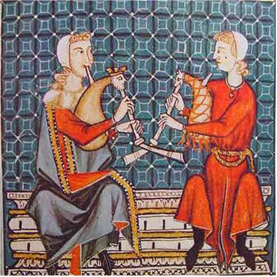

Here is a leading European early music ensemble's imagining of how it MAY HAVE sounded:
youtube
Here is another glimpse of the past, the painted ceiling of the Capella Palatina of Palermo, Sicily, Fatimid in style, from the 12th century. There are a lot of images of musicians on the six pages of this website.
In short, one mustn't take recordings of recreations of medieval music as gospel. Musicologists, music historians, and historical performers like myself do as best to be as authentic as we can, but the further we look back in history, the more we must engage in creative guesswork. It can be seen as artistic collaboration across time.
"The past is a foreign country."
- L.P. Hartley
13 notes
·
View notes
Text
56. Great Mosque


Found in Cordoba, Spain
Umayyad
Created c. 785-786 CE
Stone masonry
Visual: As shown, the hypostyle hall is famous for its striped arches and many columns. The mihrab, also dubbed the "horseshoe mihrab," is donned with many shards of gold pieces surrounding the entrance to the prayer room with blues, blacks, reds, and golds. This makes the mihrab look elegant and ornate.
Context: All mosques have to have a place of prayer that is facing Mecca, which is what the mihrab is for. The horseshoe arch was first brought by the Visigoths, but was later used by the Muslims and is a staple in Islamic architecture. There is no record of who built this Mosque, but it was built during the Umayyad Dynasty.
7 notes
·
View notes
Text
Nomadic Travel Series
Spot two, Tbilisi, Georgia
Fiction
Tbilisi. You step into this city, where East meets West, where the streets speak both Georgian and Persian. The energy is different here, raw and unfiltered, yet pulsating with life. You walk the cobblestone streets, feeling the weight of ancient empires that once fought for this land, each one leaving its mark. But you are not here just to see. You are here to transform. To leave your own imprint on this place, just as it will leave its imprint on you.

Tbilisi is a city of contrasts—modern skyscrapers pushing against the sky, while just a few streets away, old wooden balconies cling precariously to ancient houses. You move through these layers of history like a specter, ready to absorb what this city has to offer and give back in return. But this time, not just Georgian. No, you are here to Arabize, to blend the cultures into something new, something powerful. Next, the urban centers of Russian power—Moscow and St. Petersburg—await you. But for now, it's Tbilisi’s turn.
In the shadow of Narikala Fortress, you meet him. He stands alone, yet his presence fills the space. A Georgian man, Arabized. The traditional Chokha he wears tells of his roots, but the embroidery along its edges whispers of something more—something foreign, something Arab. His chin is raised, his posture confident, bordering on arrogance. You see in him what you strive to embody—a man of two worlds, blending Georgian pride with Arab elegance. His beard is meticulously groomed, his eyes sharp, as if he knows the power he holds, both culturally and personally.
He doesn’t say much. He doesn’t need to. His attire speaks for him, his presence commands attention. You nod in respect, acknowledging the transformation in front of you. You see yourself in him—a mirror of what you are becoming. You both are more than men of a single culture. You are bridges, spanning centuries and continents.
The conversation drifts into history, as it always does. You can’t help but think about the Arab-Muslim conquest of the Caucasus. The Abbasids, the Umayyads—they have all touched this land in one way or another. And yet, Tbilisi has remained fiercely Georgian. You respect that, but you also see the threads of Arab influence woven into the fabric of this city. The Arab emirate that once controlled Tbilisi left its mark—architecture, language, and culture.
But Tbilisi is not a city that bows easily. It absorbed what it wanted from the Arab world and kept the rest at arm’s length. In that way, it’s like you. You take what’s useful, what’s beautiful, and discard the rest.
As you walk through the old quarters of Tbilisi, the city’s architecture reveals itself to you. The Khrushchyovka apartment buildings stand tall, relics of Soviet rule, their concrete exteriors cold and unyielding. And yet, there’s a beauty in their simplicity, in their functionality. You can see why they were built this way—pragmatism over aesthetics. But you know there’s more to be done here.
You begin to imagine it—the transformation. What if these concrete blocks were softened with Arab arches? What if the windows were framed with mashrabiya screens, allowing light and air to flow through while maintaining privacy? You see geometric patterns etched into the balconies, subtle but unmistakably Arab. The functionality remains, but now it’s beautiful, a perfect fusion of Soviet pragmatism and Arab elegance.


In the wealthier parts of Tbilisi, you find the luxury residences, sleek and modern, with glass facades and clean lines. But they feel empty, soulless. You imagine them transformed. The glass remains, but you add ornate Arab arches to frame the windows, filigree patterns woven into the design. The entrance? Grand Arab-style wooden doors, carved with both Georgian and Arab motifs, a perfect representation of two worlds colliding and merging into something greater.


The men of Tbilisi are well-dressed. You see them in jeans, jackets, practical, modern. But there’s something missing, something that ties them to their history. You wonder what they would look like if they embraced both their Georgian roots and the Arab influence.
You imagine them wearing jeans and jackets, but with subtle Arabic embroidery along the cuffs and collars. Perhaps a light scarf, draped elegantly, adding a touch of Arab flair to the practicality of Georgian attire. The result? A casual yet sophisticated look, one that speaks of both East and West, of history and modernity.




Tbilisi has taught you much. It’s a city of contrasts, of layers. The people here are fiercely independent, and yet their culture is a mosaic of influences—Persian, Ottoman, Russian, and yes, Arab. The local customs reflect this. The hospitality, the way they greet you with food and drink, is something that echoes across cultures, including the Arab world. You learn that Georgian Orthodoxy runs deep, but there’s room for other faiths, other beliefs. This city, like you, doesn’t reject what’s foreign—it absorbs it, transforms it, makes it its own.
You reflect on the mythology of the region, the stories of ancient kings and warriors, of gods and demons. These are tales that shaped the Georgian identity, and yet you see echoes of Arab stories here too. You learn that identity is never static. It’s fluid, always changing, always evolving.
Sitting on the balcony of your small, modest residence, you look out over Tbilisi, the city stretching out before you. The streets, the buildings, the people—they are all part of something greater, something that transcends borders and cultures. You think of the Arabized man you met, of the lessons you’ve learned here. You are not just a visitor. You are part of this transformation, this blending of worlds.
But there’s more to be done. Moscow and St. Petersburg await, cities of power and influence. You will take what you’ve learned here and apply it there. The journey continues.
Night falls, and you retreat to your small, crude house. The stone walls are cool to the touch, the wooden door creaks as you close it behind you. It’s not much, but it’s enough. The salah corner is there, simple yet spiritual, a small rug facing a mihrab-like niche in the wall. You light a lantern, the soft glow filling the room with warmth. You sit for a moment, reflecting, meditating. This house, this city—it’s a part of you now.

Tbilisi has given you much. It’s a city that knows how to balance its past with its future, how to absorb what’s foreign and make it its own. You take this wisdom with you as you prepare to leave for Moscow and St. Petersburg. These cities will be different, harder, more resistant to change. But you know that transformation isn’t about forcing change—it’s about allowing it to happen naturally, blending cultures, histories, and identities into something new.

And so, you move forward, a nomad with a purpose, with a vision. The journey is far from over.
#transformation#arabophile#arabization#arabophilia#arabic#CulturalFusion#ArabizedFashion#ArabInspiration#CrossCulturalFashion#NomadicInfluence
4 notes
·
View notes
Text
The Moors were a Muslim people of Arab and Berber origin who conquered much of the Iberian Peninsula (modern-day Spain and Portugal) from the early 8th century until the late 15th century. The period of their conquest and rule in Spain is commonly known as the "Moors' Conquest of Spain."
The Moors first arrived in Spain in 711 CE, when they invaded the Visigothic kingdom in the south. Led by Tariq ibn Ziyad, they quickly defeated the Visigothic forces and established the Umayyad Caliphate of Cordoba. Over the next several centuries, the Moors expanded their territory northward, conquering cities and territories throughout the region.
During their conquest of Spain, the Moors brought with them a rich Islamic culture, including new technologies, mathematics, philosophy, and architecture. They also allowed religious freedom and tolerance for Jews and Christians living under their rule, although they did impose taxes and restrictions on non-Muslims.
In 1031 CE, the Umayyad Caliphate of Cordoba broke apart into smaller states known as taifas, which were then conquered by Christian kingdoms in the north of Spain. However, the Moors continued to control the southern region of Andalusia until 1492, when the Catholic monarchs Ferdinand and Isabella completed the Reconquista, or reconquest, of Spain.
The fall of the Moors marked the end of Muslim rule in Spain and the beginning of the Spanish Inquisition, which targeted Jews and Muslims who did not convert to Christianity. Despite this, the Moors' conquest of Spain left a lasting legacy on Spanish culture and architecture, as well as on the broader history of the Mediterranean world.

3 notes
·
View notes
Text
Experience Jordan: A Journey Through Ancient Civilizations and Natural Beauty"
Jordan, a captivating blend of ancient civilizations, stunning landscapes, and warm hospitality, offers travelers a truly enriching experience. This Middle Eastern gem, known for its rich history and unique natural wonders, is a destination that promises adventure and cultural immersion at every turn.
Begin your journey in Amman, Jordan’s vibrant capital. Here, you can explore the Citadel, home to the Roman Temple of Hercules and the Umayyad Palace, which offer stunning views of the city. A short walk takes you to the Roman Amphitheatre, an ancient relic that still hosts cultural performances today. Stroll through Amman’s lively streets and bustling markets, where you can savor traditional Jordanian dishes like mansaf and falafel.
No trip to Jordan is complete without visiting the UNESCO World Heritage site of Petra, famously known as the "Rose City." Hidden within the rugged mountains, Petra’s rock-cut architecture is nothing short of awe-inspiring. Walk through the narrow Siq, a gorge that leads to the breathtaking Treasury, and explore ancient tombs, temples, and pathways. The grandeur of Petra speaks volumes of Jordan’s historical significance as a crossroads of ancient civilizations.
For those seeking adventure, Wadi Rum offers an unforgettable desert experience. Known for its red sand dunes and towering rock formations, Wadi Rum is ideal for jeep tours, hiking, and camel treks. Spending the night in a Bedouin camp under a star-filled sky provides a glimpse into the nomadic lifestyle and the region’s cultural traditions.
Another must-visit destination is the Dead Sea, where you can float effortlessly in the mineral-rich waters. Renowned for its therapeutic properties, the Dead Sea is perfect for a relaxing retreat. Jordan also offers the hidden gem of Aqaba, a coastal city along the Red Sea, where travelers can enjoy snorkeling and diving in crystal-clear waters.
Conclusion
Jordan offers a captivating journey through time, from the ancient wonders of Petra and Jerash to the natural beauty of Wadi Rum and the Dead Sea. Its unique blend of history, culture, and adventure makes it a destination like no other. Whether you're exploring archaeological treasures or enjoying desert landscapes, Jordan invites you to experience a rich and rewarding adventure.
0 notes
Text
Blog Post 11 (Week 4, 5)
Learn About a New World -> SYRIA
"Aleppo, Syria (What's It Like To Be A Tourist In 2023?)." Youtube, uploaded by Matt and Julia, 7 July 2023, www.youtube.com/watch?v=scXE8luwnsQ. Accessed 25 Apr. 2024.
Ayash, Mohammad. "Top 20 Most Popular Syrian Foods." Chef's Pencil, 27 May 2021, www.chefspencil.com/top-20-most-popular-syrian-foods/. Accessed 25 Apr. 2024.
Macaulay, Elizabeth. "The Great Mosque of Damascus." Smarthistory, 15 May 2019, smarthistory.org/mosque-damascus/. Accessed 25 Apr. 2024.
"Spending 13 Days Alone in Syria (During the War)." Youtube, uploaded by Drew Binsky, 25 Jan. 2023, www.youtube.com/watch?v=QVI2LOIOAKc. Accessed 25 Apr. 2024.
"Traveling to Syria in 2023... (Intense!)." Youtube, uploaded by Matt and Julia, 3 June 2023, www.youtube.com/watch?v=mKNOirOX1hE. Accessed 25 Apr. 2024.
The country I chose for research is Syria. Based on the readings from Brothers of the Gun and the topics we have discussed in class, I was intrigued on what Syria looks like today. Today, Syria is rebuilding their cities. I watched travel vloggers, Matt and Julia and Drew Binsky, as they traveled to various parts of Syria. Both parties visited Damascus. Damascus is a bustling city, full of markets called souks. The souks contained items from food, spices, clothes, and ornate knickknacks. As the vloggers traveled throughout Syria, I noticed the welcoming nature of Syrians. Syrians welcomed the travelers and made them feel at home. For example, many of the people Drew Binsky interacted with offered him free food from tea to cookies. As the travel vloggers walked around the city, Syrians would wave hello and shake hands with them. Moreover, many of the Syrians that were interviewed by the vloggers were smiling and happy. They were proud of their country. While watching these vlogs, I also noticed the food. The food looked delicious. Thus, I did my own research. I found a website that listed Top 20 foods in Syria. The one food item I noticed that kept on appearing in the vlogs was manakish. It is a round flat bread with cheese, meat, zaatar (a spice blend), and tomato sauce. Another item, or more like place, that appeared in both vlogs was the Great Mosque of Damascus or Umayyad Mosque. The Umayyad Mosque is one of the oldest mosques in the world. Furthermore, aside from holding a significant place in Islamic history, the mosque is an architectural marvel for it holds domes, courtyards, and a vast prayer hall. In short, this quick research on Syria was an eye-opening experience because it has changed my perspective of the country. Particularly, Syria is a country in the process of rebuilding their cities. Yes, there is a lot of destruction from the war and from the recent 2023 earthquake. However, the city is full of culture and generous people—people who are trying to rebuild their lives and move on from the past.

0 notes